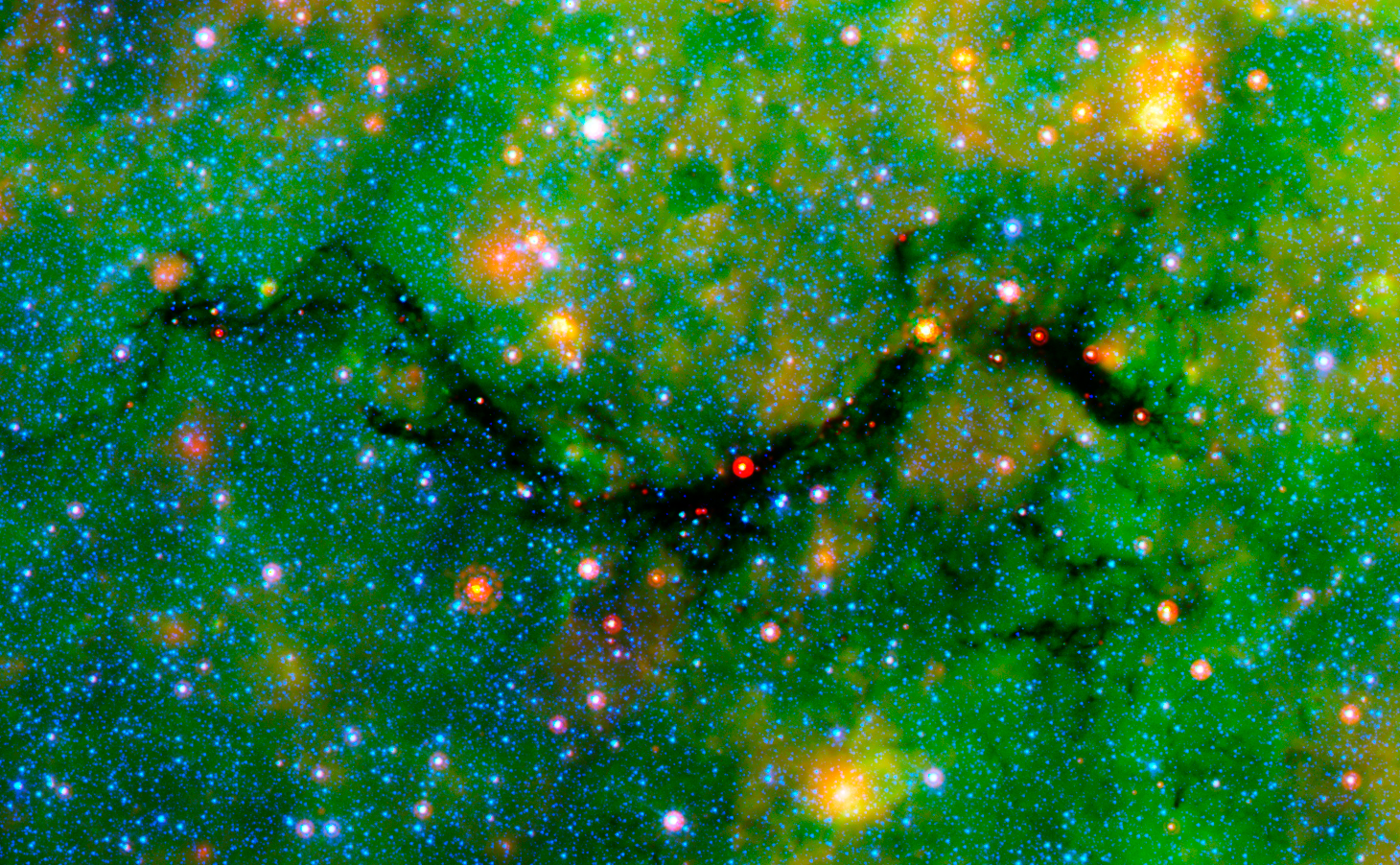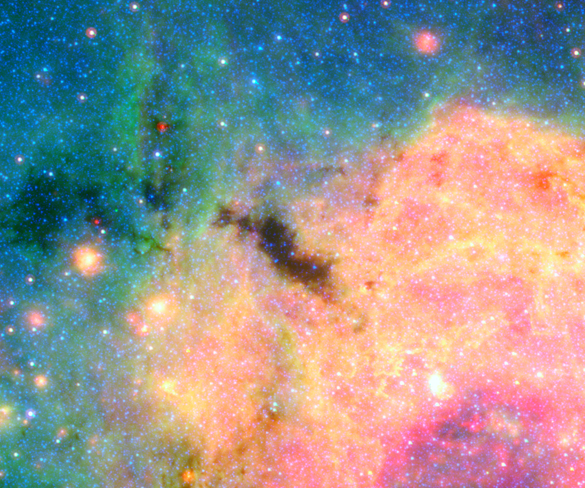1 min read
Snake in Galactic Plane (Spitzer)

The Snake is a serpentine-shaped, extremely filamentary cloud. In this infrared image from the Spitzer Space Telescope, the blue dots are stars relatively undimmed by dust, while the red dots are embedded, forming stars.
About the Object
- R.A. PositionR.A. PositionRight ascension – analogous to longitude – is one component of an object's position.5:31:22.7
- Dec. PositionDec. PositionDeclination – analogous to latitude – is one component of an object's position.+12:15: 30.1
- ConstellationConstellationOne of 88 recognized regions of the celestial sphere in which the object appears.Orion
- DistanceDistanceThe physical distance from Earth to the astronomical object. Distances within our solar system are usually measured in Astronomical Units (AU). Distances between stars are usually measured in light-years. Interstellar distances can also be measured in parsecs.10,800 Light years
About the Data
- Data DescriptionData DescriptionProposal: A description of the observations, their scientific justification, and the links to the data available in the science archive.
Science Team: The astronomers who planned the observations and analyzed the data. "PI" refers to the Principal Investigator.Taken by the Spitzer Infrared Telescope - InstrumentInstrumentThe science instrument used to produce the data.IRAC, MIPS
- FiltersFiltersThe camera filters that were used in the science observations.3600nm, 4500nm, 8000nm, 24000nm
- Object NameObject NameA name or catalog number that astronomers use to identify an astronomical object.IRDC G11.11-0.11
- Object DescriptionObject DescriptionThe type of astronomical object.Thick cloud in galactic plane
- Release DateApril 10, 2020
- Science ReleasePiercing the Dark Birthplaces of Massive Stars with Webb
- CreditImage: NASA, Caltech, Sean Carey (SSC)

These images are a composite of separate exposures acquired by Spitzer. Several filters were used to sample specific infrared wavelength ranges. The color results from assigning different hues (colors) to each monochromatic (grayscale) image associated with an individual filter. In this case, the assigned colors are: Violet: 3600nm Blue: 4500nm Green: 8000nm Red: 24000nm
Related Images & Videos

Brick in Galactic Center (Spitzer)
An image from the Spitzer Space Telescope shows an area of the center of the Milky Way known as the Brick. More than 100,000 times the mass of the Sun, the Brick doesn’t seem to be forming any massive stars — yet. But based on its immense mass in such a small area, if it does...
Share
Details
Laura Betz
NASA’s Goddard Space Flight Center
Greenbelt, Maryland
laura.e.betz@nasa.gov
NASA, Caltech, Sean Carey (SSC)































